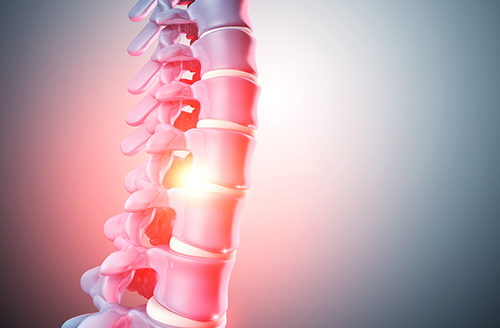A new study in mice led by researchers from NYU Grossman School of Medicine found that blocking the signaling pathway, called Notch, in aging skeletal stem cells caused a “massive increase” in bone mass and restored lost bone-healing ability during aging.
The findings are published in Bone Research in an article titled, “Loss of Notch signaling in skeletal stem cells enhances bone formation with aging.”
“Skeletal stem and progenitor cells (SSPCs) perform bone maintenance and repair,” wrote the researchers. “With age, they produce fewer osteoblasts and more adipocytes leading to a loss of skeletal integrity. The molecular mechanisms that underlie this detrimental transformation are largely unknown. Single-cell RNA sequencing revealed that Notch signaling becomes elevated in SSPCs during aging. To examine the role of increased Notch activity, we deleted Nicastrin, an essential Notch pathway component, in SSPCs in vivo.”
The researchers found the Notch pathway to become abnormally active, shifting the cells toward the fate that increases fatty degeneration of bone marrow. When they genetically engineered mice to lack Nicastrin, a core part of the Notch signaling chain reaction, it returned the stem cells to the bone-making cell pathway, and increased bone formation “even beyond that seen in young mice.”
“Our findings reveal that Notch in skeletal stem cells becomes abnormal with age, and that blocking it prevents age-related skeletal degeneration,” said corresponding study author Philipp Leucht, MD, PhD, the Raj-Sobti-Menon associate professor in the department of orthopedic surgery and cell biology at NYU Langone Health. “The reprogramming of adult stem cells as a source of bone-making cells in healing-compromised people has profound therapeutic potential, and we hope to confirm the value in future studies of Ebf3 as a drug target in preventing osteoporosis.”
The researchers used single-cell RNA sequencing of young and aged mouse bones to reveal that Notch signaling becomes elevated in SSPCs during aging. This provided the research team with a closer view of cellular differences in SSPCs as they aged.
Notch signaling is important to the development of many tissues in the womb, but then is suppressed to enable healthy adult tissue function, Leucht added.
“As a rising trainee in orthopedic surgery, I am intrigued by the molecular and cellular machinery that governs skeletal stem cell fate,” said first author Lindsey Remark, MD, PhD, a graduate student in the Leucht laboratory. “Our newly gained knowledge opens potential therapeutic avenues to overcome age-related bone loss by manipulating downstream effectors for Notch signaling in these stem cells.”



